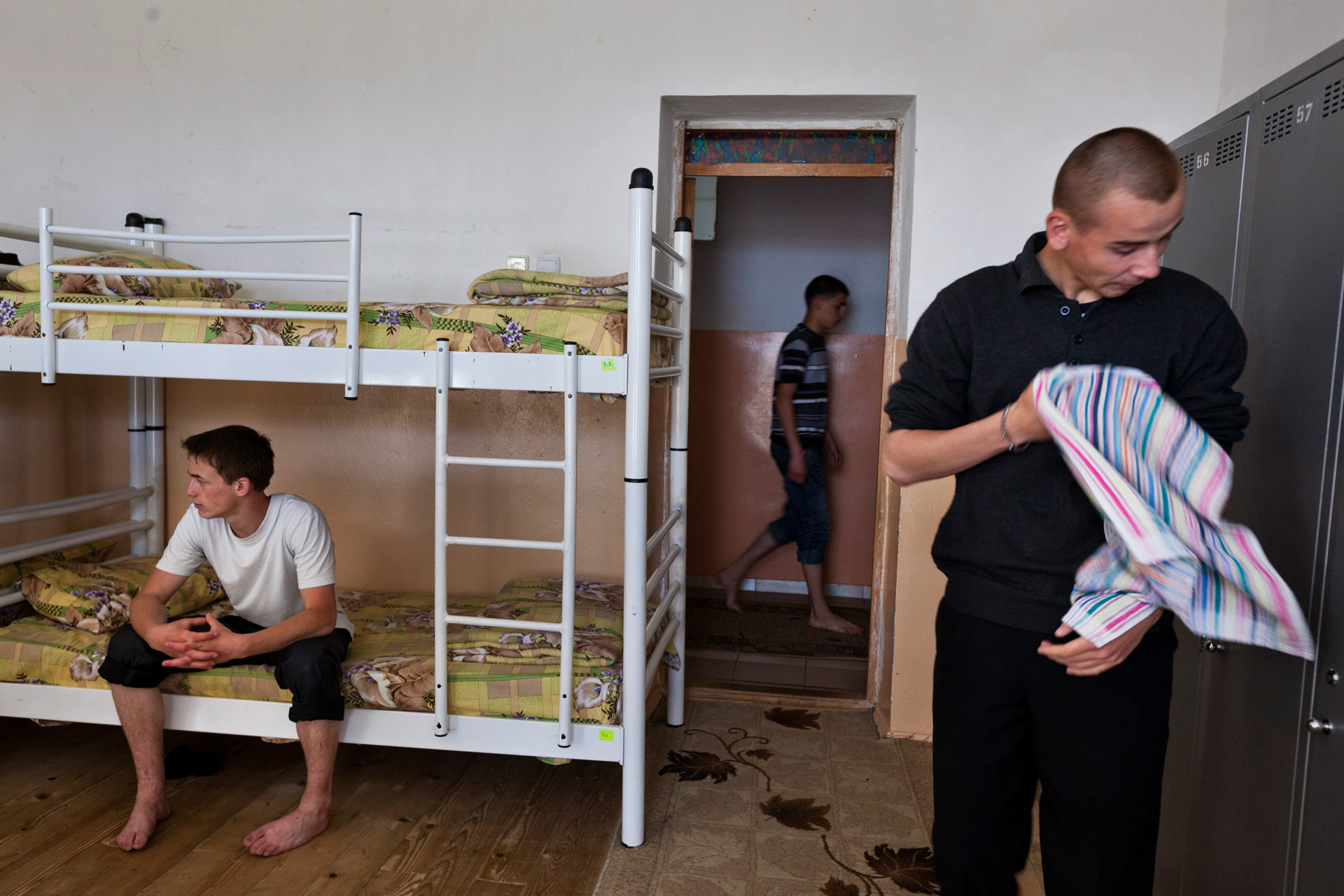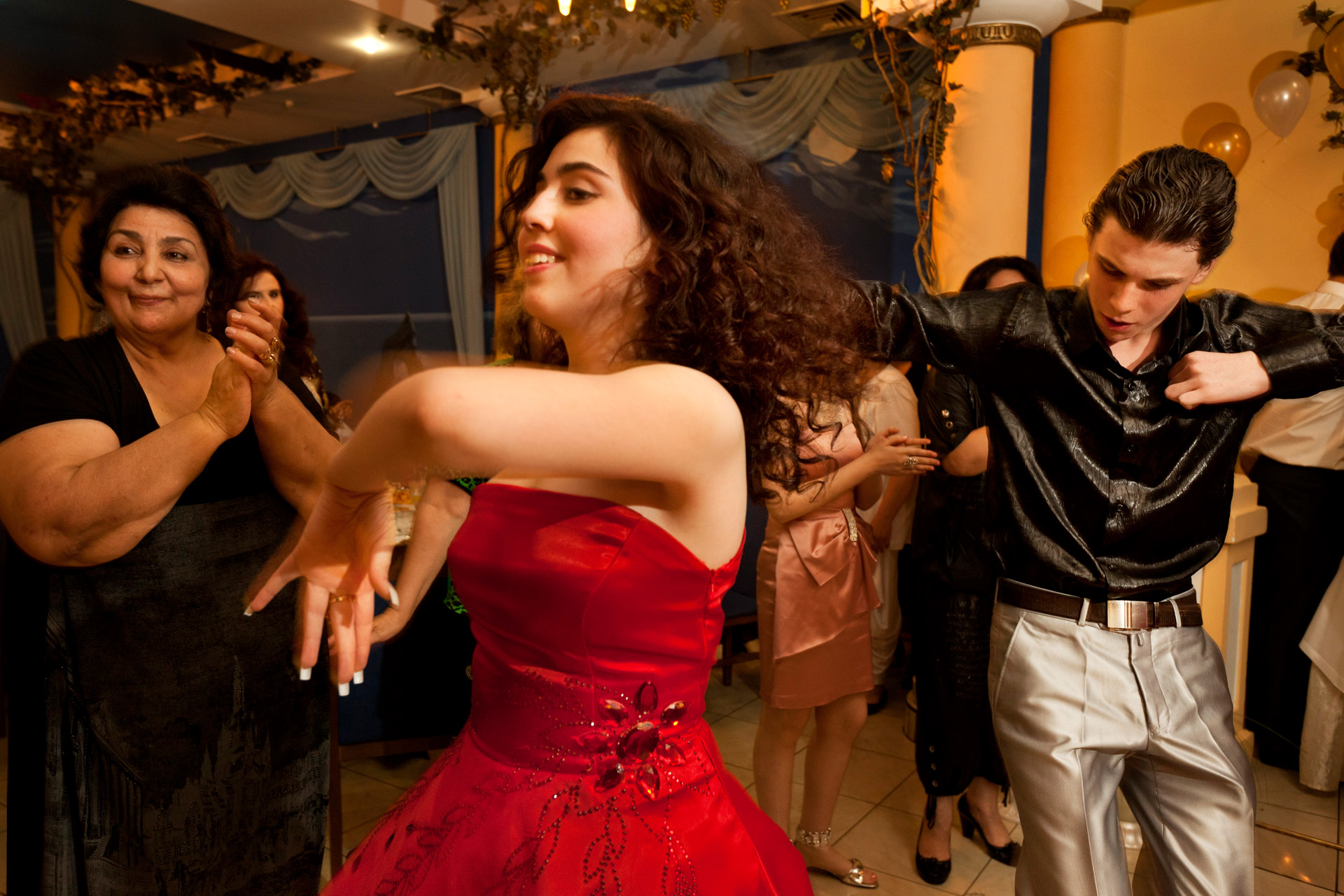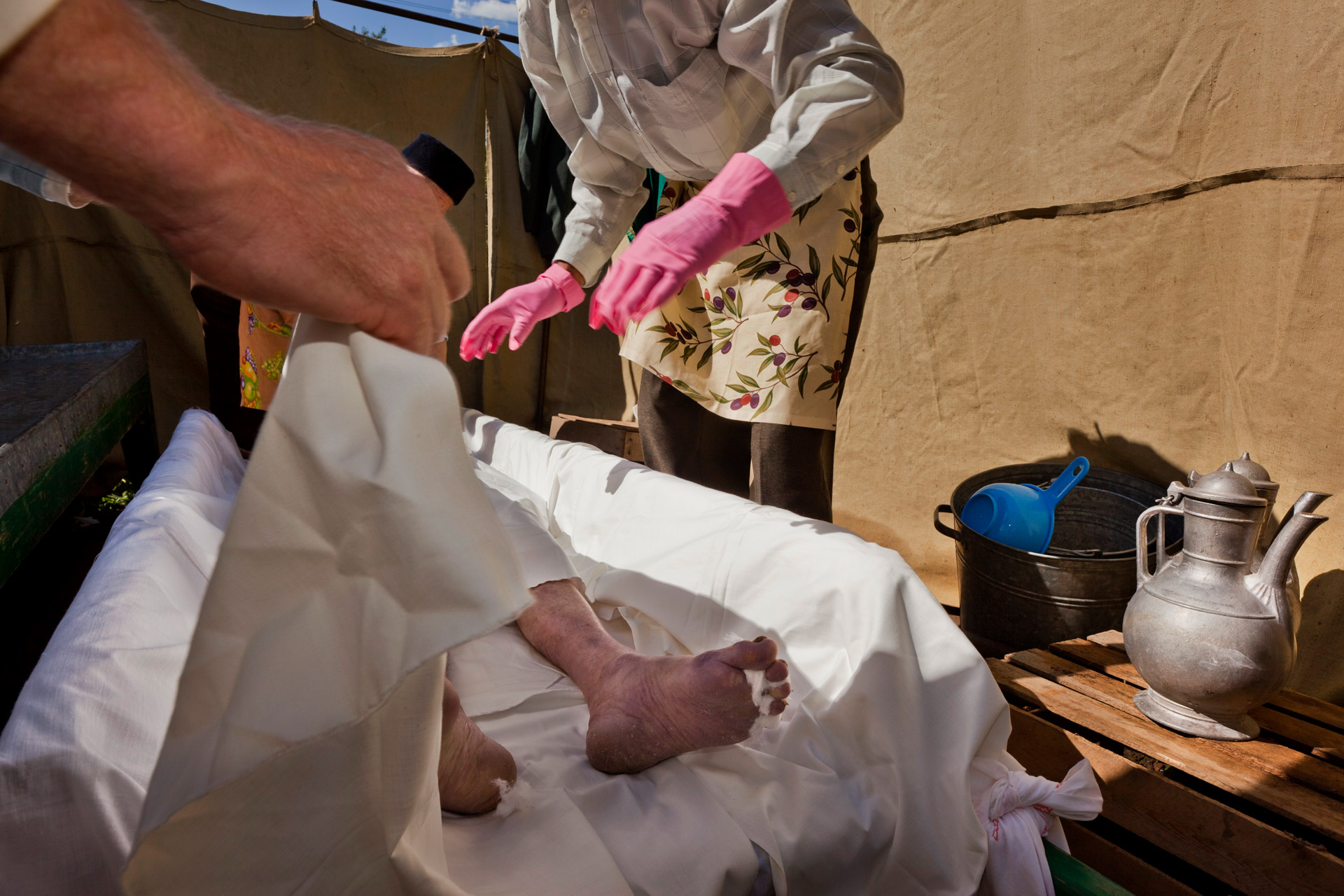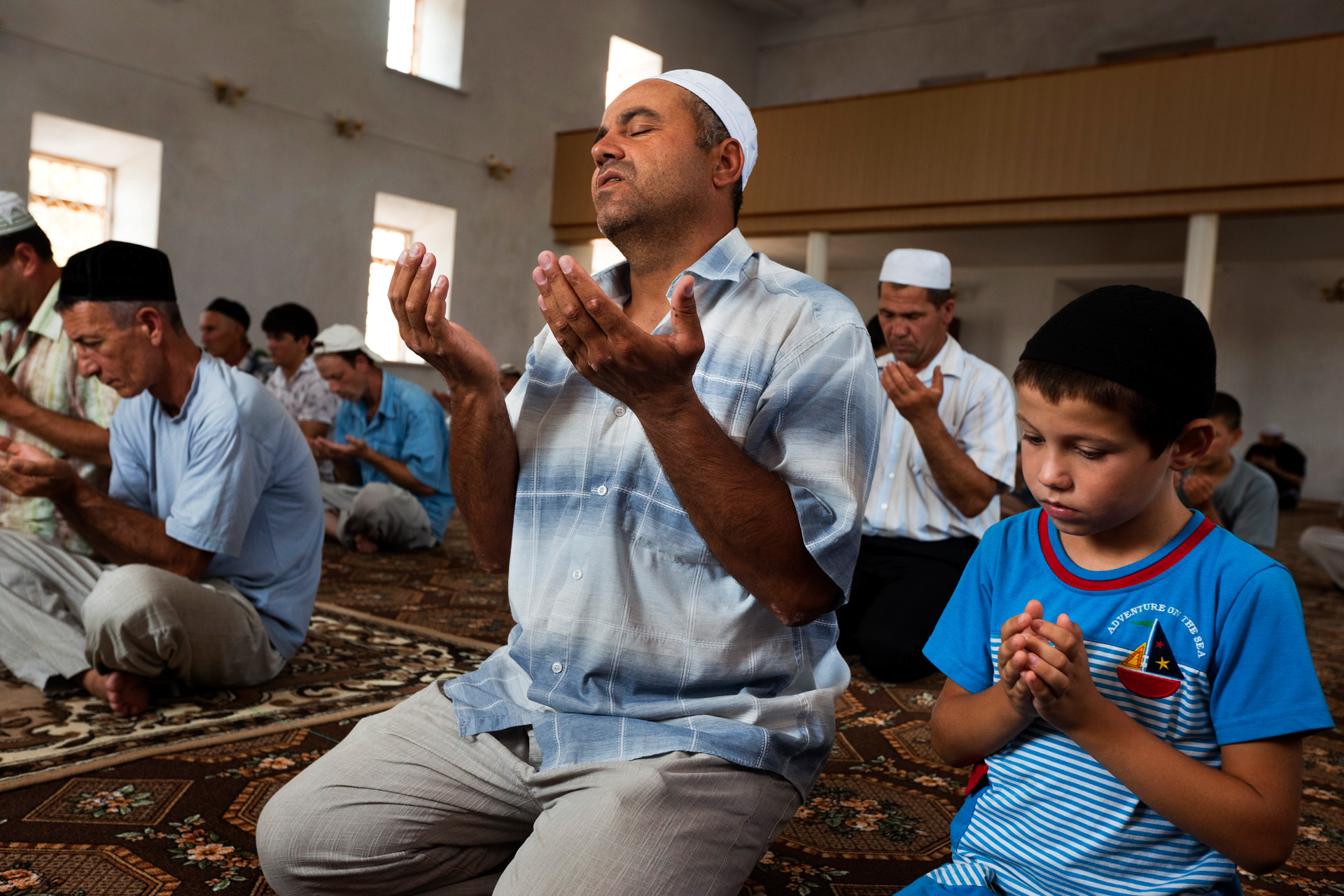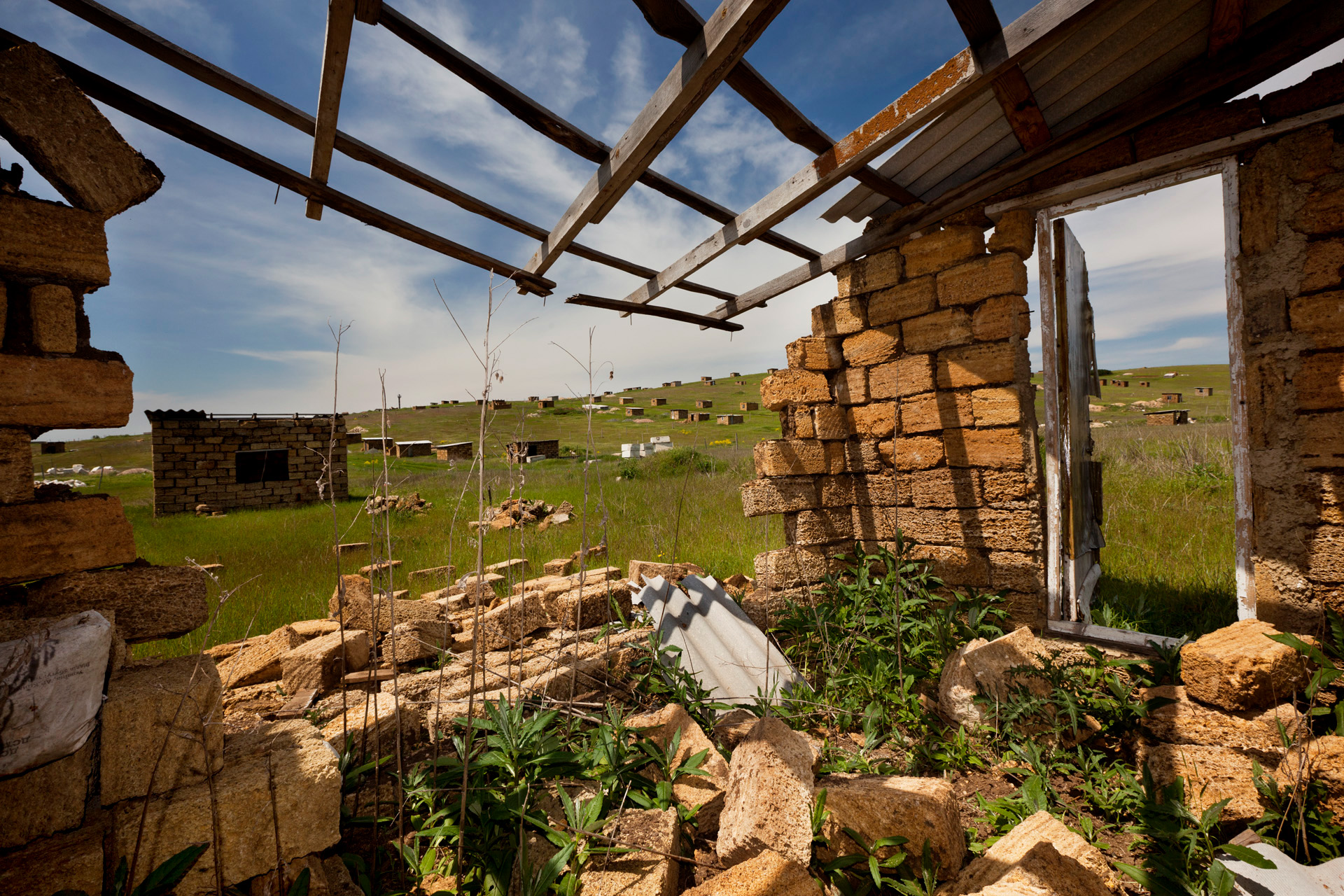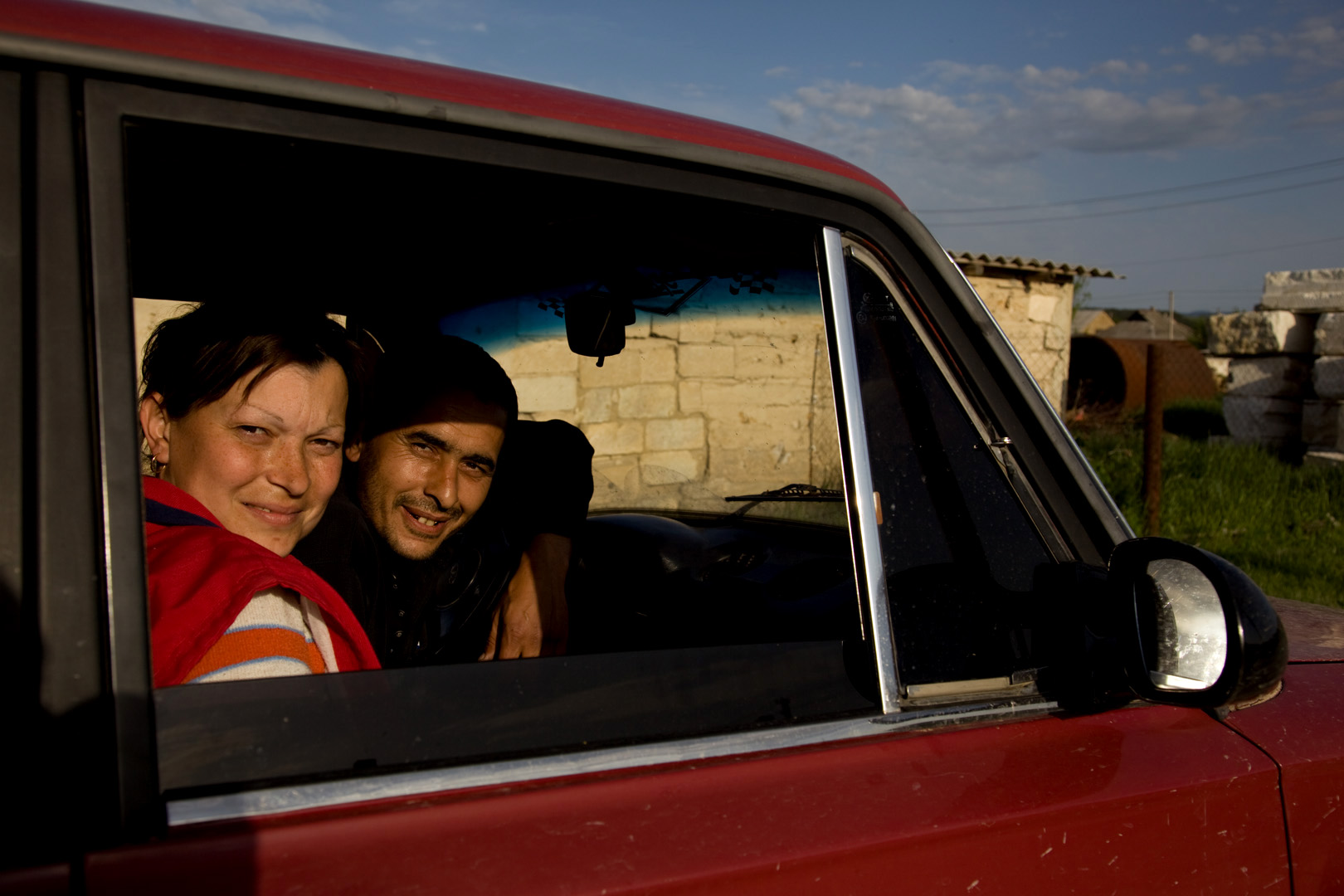The Crimean Tatars are a Turkic ethnic group residing in present day Ukraine. They have a tragic history: after being falsely accused of collaborating with Nazi Germany, the entire Crimean Tatar population (200,000 men women and children) was forcibly deported en masse to Central Asia by Soviet leader Joseph Stalin within a few days in 1944.
They were finally allowed to return during the twilight years of the Soviet Union, and now make up around 12% of Crimea’s population – massively outnumbered by the ethnic Russians who dominate the peninsula.
The main problem for many Crimean Tatars is that they have not been able to reclaim the lands, which their families possessed before the deportation. They accuse the authorities of doing little to help them reintegrate into Ukrainian society.
If their applications to build houses are refused, some Tatars seize plots of land, put up small stone huts to indicate possession, and then gradually construct larger homes on the self-appropriated sites.
Hundreds of the austere stone huts stand clustered together in scrubby fields on the outskirts of Simferopol. But these bleak little settlements are not just products of desperation; they are also symbols of the Tatars’ determination to re-establish communities for themselves here. The local authorities have repeatedly warned that seizing land is a crime, which could increase ethnic tensions.
The principal religion of the Crimean Tatars is Sunni Islam of the Hanafi school. During the Stalin era, hundreds of mosques were closed, clergy were executed, and celebrating Muslim holidays were banned. After their return from exile, the Crimean Tatars started to restore some of the old mosques and tried to build new ones, often stirring up debate and even hostility from the ethnic Russian majority in Crimea. Yet, tucked away in the small community of Azovskoye Tartars were able to establish their first religious school (Madrasa) – the only such institution on the entire territory of Ukraine.
While only few Tatars were able to establish themselves successfully in the post-Soviet society, for many of the older generation the return to Crimea ensures their modest desire that they will once be buried in their native soil.



